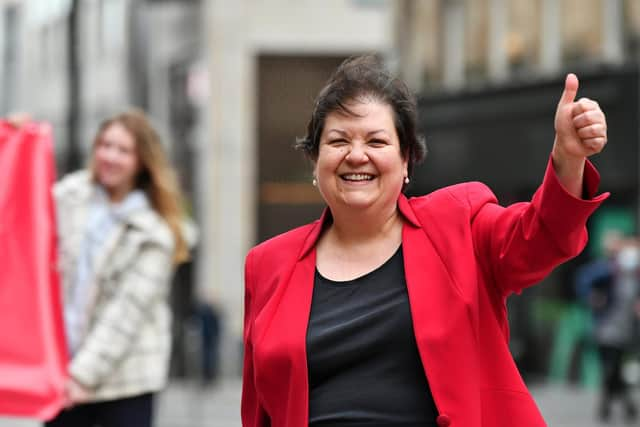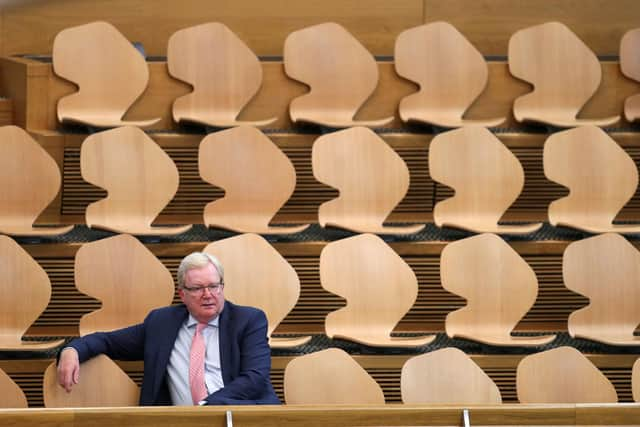Scottish election 2021: Eight constituencies that will decide if SNP win majority
While the SNP are almost certain to win the most seats, stiff competition in some key constituencies threatens to prevent the party gaining an overall majority in Holyrood.
Here are eight constituency battlegrounds expected to decide whether Nicola Sturgeon’s party achieves that ultimate goal.
Dumbarton
•Winner (2016): Labour
•Second Place (2016): SNP
•Swing to lose: 0.16%
Advertisement
Hide AdAdvertisement
Hide AdThe road to an SNP majority runs straight through seats like Dumbarton, as do Scottish Labour’s hope of forming the main opposition in Holyrood.


Jackie Baillie has held the seat at every single Scottish Parliament election since 1999. But after returning with a comfortable majority of more than 6,500 in 2003, Ms Baillie’s grip on Dumbarton has been slipping ever since.
The rising tide of SNP support in the constituency vote threatens to wash away what remains of her majority. The Labour Party veteran came ahead of her 2016 SNP challenger by just 109 votes, making the seat the most marginal in Scotland.
Aberdeenshire West
•Winning party (2016): Scottish Conservatives


•Second place (2016): SNP
•Swing to lose: 1.28%
Something of a Frankenstein’s constituency, Aberdeenshire West was born in 2011, when officials stitched together chunks of two abolished seats – West Aberdeenshire and Kincardine, and Gordon (famously Alex Salmond’s old Holyrood stomping ground).
Although the region was long thought of as part of an “Orange Wall” of Lib Dem support, the newly-formed seat was snapped up by the SNP at the 2011 Scottish Parliament election.
Then in 2016, Alexander Burnett won the seat for the Scottish Tories.
The Eton-educated heir to the Barony of Kilduthie is sitting on a majority of just 900 votes, and will need to see off a strong challenge from the SNP’s former head of communications Fergus Mutch.
Eastwood
•Winning Party (2016): Scottish Conservatives
•Second place (2016): SNP
•Swing to lose: 2.22%
This affluent seat in leafy south-west Glasgow was first won by Labour’s Ken Macintosh in 1999. Mr Macintosh, who went on to serve as Holyrood’s presiding officer, held onto the seat until 2016, when a surging SNP vote helped the Scottish Conservatives’ Jackson Carlaw squeeze ahead.
Advertisement
Hide AdAdvertisement
Hide AdThe seat is now thought to be a toss-up between the Tories and the SNP. With Mr Carlaw, who resigned as his party’s leader last year, defending a slim majority of around 1,500 votes, his seat is high up on the SNP HQ’s hit list.
Taking Eastwood – and the even more vulnerable seat of Dumbarton – could deliver a clean sweep of the West Scotland region constituencies for the SNP.
Perthshire South and Kinross-shire
•Winning party (2016): SNP
•Second place (2016): Scottish Conservatives
•Swing to lose: 1.97%
Perthshire South and Kinross-shire is a predominantly rural constituency, with important links to Scotland’s livestock and fruit-growing markets.
And the area has certainly been fertile ground for the SNP. In 1995, Roseanna Cunningham won the Westminster seat of Perth from the Scottish Conservatives, who had dominated there since the end of the Second World War.
Ms Cummingham retained Perth at the 1997 general election, and went on to win the seat at the newly-formed Scottish Parliament two years later. Since then, she has been returned by constituents in 2003, 2007, 2011 – when Kinross was added after a boundary review – and in 2016.
But the Tories have never been far behind Ms Cunningham and after she announced her retirement from Holyrood last year, her SNP successor Jim Fairlie is sure to face stiff competition.
Ayr
•Winning Party (2016): Scottish Conservatives
•Second place (2016): SNP
•Swing to lose: 1%
Originally a Labour seat in 1999, Ayr has since been held at every Holyrood election by the Scottish Tories’ John Scott. But Mr Scott’s majority has been whittled down in recent ballots by his SNP challengers. He now sits on a lead of around 700 votes.
With Nicola Sturgeon’s party well ahead of rivals in constituency vote polling, toppling Mr Scott in one long-standing Tory stronghold would be the cherry on top.
North East Fife
•Winning party (2016): Liberal Democrats
•Second place (2016): SNP
•Swing to lose: 5.09%
Advertisement
Hide AdAdvertisement
Hide AdA Liberal Democrats stronghold for decades, North East Fife has been solidly orange – with the exception of 2011 when the SNP’s Roderick Campbell won the seat – in every Scottish Parliamentary election since 1999.
Though now held by leader Willie Rennie after his 2016 victory, there is little doubt North East Fife is back on the SNP’s target list. Mr Rennie has a fairly comfortable majority of around 3,500, but his party has struggled in recent Scotland-wide polls.
Edinburgh Southern
•Winning party (2016): Scottish Labour
•Second place (2016): SNP
•Swing to lose: 1.47%
Formerly Edinburgh South prior to the 2008 boundary review, the well-heeled suburban constituency is known for producing razor thin majorities. In 2003, Lib Dem stalwart Mike Pringle beat Labour’s Angus Mackay to win Edinburgh South by just 158 votes.
But it was the SNP’s (now Alba’s) Jim Eadie who won the newly-formed Edinburgh Southern in 2011, before Labour’s finance spokesman, Daniel Johnson, took it in 2016.
Mr Johnson, who sits on a majority just north of 1,000, is standing against Catriona MacDonald for the SNP, and Miles Briggs of the Scottish Tories.
East Lothian
•Winner (2016): Labour
•Second Place (2016): SNP
•Swing to lose: 1.49%
Former Scottish Labour leader Iain Gray is standing down after 14 years as the constituency’s MSP and the SNP has made it a target seat.
Labour has held the seat since the first Scottish Parliament election in 1999, but Mr Gray's majority fell to just 151 in 2011 and was 1,127 last time.
Taking over the Labour mantle is primary teacher Martin Whitfield, who represented East Lothian at Westminster from 2017 until 2019.
Advertisement
Hide AdAdvertisement
Hide AdThe SNP candidate is Paul McLennan, a councillor for 14 years and a former council leader, who says he is "cautiously optimistic" he can win, while Tory Craig Hoy has also thrown his hat in the ring.
A message from the Editor:
Thank you for reading this article. We're more reliant on your support than ever as the shift in consumer habits brought about by coronavirus impacts our advertisers.
If you haven't already, please consider supporting our trusted, fact-checked journalism by taking out a digital subscription.
Comments
Want to join the conversation? Please or to comment on this article.